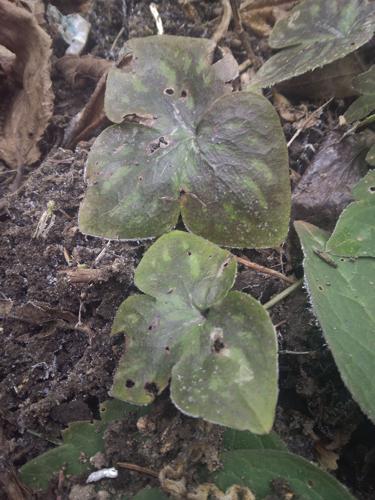The Bold and Cold Lessons of Winter Botany

By Torry Nergart, Conservation Easement Manager at Conserving Carolina.
Mustering the bravery to suit up and get outside this time of year takes a bit of extra courage, but for the bold and the cold plants still have plenty of natural lessons to teach even when the ground is frozen.
Looking out onto the grey mountain slopes, it seems as if all life has gone to sleep until spring.
Deciduous trees have shed their broad leaves and sent the last of their collected solar energy into their roots.
The fallen leaves become rich compost for the soil and habitat for many walks of life.
‘Evergreen’ conifer plants have shed last season’s needles to challenge the notion that plants are static backdrops to our lives while other plants cling onto whatever sunlight they can find to photosynthesize or use other plant tissues like bark or twigs to soak up solar energy.
The sassafras tree will create chlorophyll in its twigs forming a green color to its crown to take advantage of warmer winter days and be better prepared for the coming spring. Greenbrier vines have a similar strategy with their green stems feeding the sun’s energy into their gigantic underground tubers.
While these two plants tower and climb, other more diminutive plants take advantage of above-freezing temperatures to get a head start on spring.
The low-growing liverleaf blooms early in spring along with many other wildflowers to beat the tree canopy closing above them.
Now is a great time to spot this somewhat rare plant while it quietly tracks the sun before being covered up by other spring plants.
Other herbaceous perennial plants change their overall form reverting to basal rosettes, not a shadow of its former tallness but rather a compact ready-to-leap version of itself.
These sprouts and winter leaves will do some photosynthesizing and huddle close to the leaf litter or the organic soil layer to keep some insulation.
This winter preparation allows for a timely ‘leap up’ once growing conditions improve and provides a head start on more cold-conservative plants.
Some plants move their leaves and petioles in response to winter cold. In our area the rhododendron shrub curls and tucks its evergreen leaves in and down when the temperature really drops.
This type of plant movement is called thermonasty, a type of plant movement that is not traveling toward stimuli but rather is an in-place response to the environment.
Plants capable of thermonasty typically have layers of elongated tissue cells in places compared to other portions of the plant, thus when cooled and contracted the unevenness of the two causes curling.
Of course, learning all this is of no matter if we are not left with any natural places.
All the plants referenced here come from a wide variety of habitats that will dissipate without both land protection and land stewardship.
We have to always be acting to set aside wide swaths of connected natural land and take care of this generous landscape.
A new year is a great time to act upon this call from the land.
To honor the life and recent passing of Navajo land activist and artist Klee Benally, I ask that you remember his words: “Actions are our prayers when we live our lives in reverence.”
Reverence can be gleaned from even the smallest places and sometime the coldest.
Look to the winter for a hope of spring, but know this season holds its own treasures.